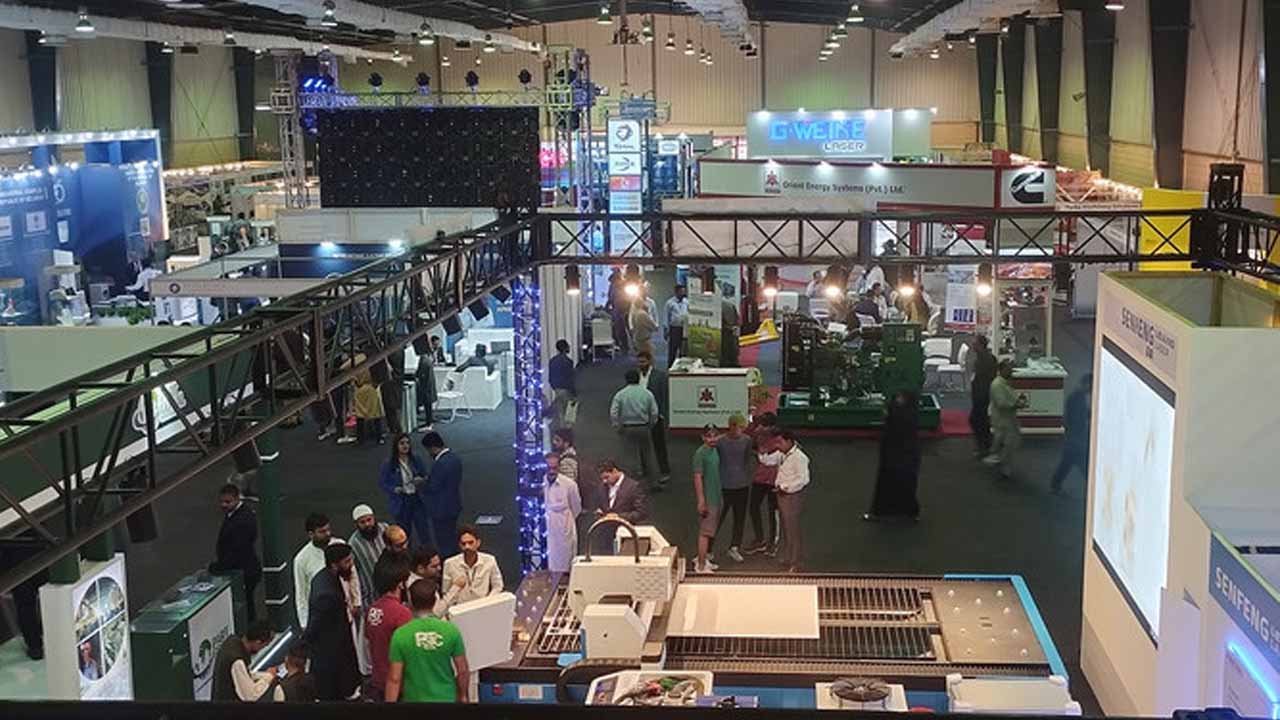More than 400 foreign and local companies displayed their products at the three-day Textile Asia Exhibition that opened its doors to participants at Karachi’s Expo Center on Friday, aiming to revive the textile industry of the South Asian country.
According to the organizers, the show aims to increase production in Pakistan’s textile industry, which is currently struggling with a lack of dollar liquidity among other issues.
The exhibition is being attended by representatives from China, Turkey, Belarus, Germany, the United Arab Emirates, Taiwan, Japan, and the Netherlands, who are presenting a wide range of goods.
According to Muhammad Uzair Nizam, the expo’s organizer, “450 firms from eight countries are participating in this exhibition, which is helping to resuscitate the textile sector of Pakistan.”
“Pakistan needs funds essentially to support their continued economic growth. This expo is assisting in the government of Pakistan’s and the textile industry’s goal of growth.”
More than 60% of Pakistan’s exports are made up of textiles, but since October of last year, the exports of textiles have been declining steadily, according to the Pakistan Textile Mills Association (APTMA).
The foreign exchange reserves of Pakistan’s central bank have decreased to a level that is just barely sufficient to support four weeks of imports as a result of the country’s recent economic difficulties. As a result, the processing of letters of credit (LCs) required for imports is experiencing delays, and vital goods like food and medication are prioritized.
Pakistani textile millers said on Wednesday that despite an economic crisis and manufacturers finding it difficult to procure raw materials because of import restrictions, the South Asian nation will not be able to meet its $26 billion export goal for the current fiscal year.
Zubair Motiwala, CEO of the Trade Development Authority of Pakistan (TDAP), spoke during the event and referred to the existing high manufacturing expenses as “terrible.”
“If you are talking about the cost of doing business, cost of manufacturing, it is terrible, it is very very high,” he said. “Increasing exports is the only way for bridging the trade gap and it would also improve the foreign exchange reserves position.”
Tariq Yousuf, president of the Karachi Chambers of Commerce and Industry (KCCI), hoped that the economy would rebound after the current deterioration.
“Our economy is under pressure since November last year and now it is almost five months that we are facing this situation,”
It gradually became worse, and now it’s at a point where it ought to improve. The decrease in exports is partly a result of the unresolved dollar exchange rate and the ambiguity surrounding the acceptability of the product’s pricing by our consumers, both buyers, and sellers.
Foreign participants stated that they wanted to improve their market penetration and strengthen economic ties with Pakistan.
“Here we came as part of our Belarusian delegation that consists of around 32 people to restart business with Pakistan,” Diana Shurpakova, a marketing specialist at Belarusian state-owned oil refinery Naftan.












